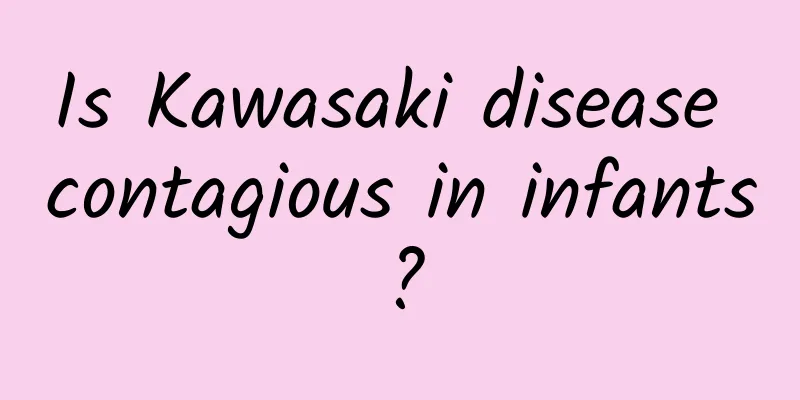What are the symptoms of jaundice in infants and young children?

|
Jaundice in infants and young children is mainly manifested by yellowing of the skin, sclera and mucous membranes, and may be accompanied by symptoms such as drowsiness and poor appetite. In severe cases, medical treatment should be sought as soon as possible to avoid affecting health. This article will discuss its symptoms and coping measures in detail to help parents better identify and deal with jaundice in infants and young children. 1. Yellowing of the skin and sclera The most obvious symptom of jaundice is yellowing of the skin and sclera, which usually starts on the face and gradually spreads to the whole body. The degree of jaundice can be judged by observing the color changes of the skin. If the yellowing is limited to the face and upper body, it is generally mild, but if the yellowing spreads to the abdomen and lower limbs, it may indicate that the jaundice is more serious. 2. Drowsiness and fatigue Infants and young children with high jaundice may experience drowsiness and fatigue. This is because certain factors lead to increased bilirubin levels, which affect the function of the central nervous system. For example, breastfeeding jaundice may make babies easily tired and have a weakened response to external stimuli. 3. Loss of appetite Jaundice may also affect the appetite of infants and young children, causing loss of appetite or even refusal to breastfeed. If this symptom is not improved, it may lead to dehydration or malnutrition, and parents should observe closely. 4. Treatment Methods For mild jaundice, light therapy is an effective and common treatment that helps break down excess bilirubin in the body. For more severe jaundice, immune globulin transfusions or even exchange transfusions may be needed. It is also important to keep your baby well-nourished and hydrated. 5. Seek medical attention promptly If the baby's jaundice is severe, the skin and sclera are obviously darker, and the baby is constantly drowsy and refuses to breastfeed, the doctor should be consulted as soon as possible. The doctor will conduct examinations and treatment to ensure the baby's health. High jaundice in infants and young children can cause symptoms such as yellowing of the skin and sclera, drowsiness and loss of appetite, and medical intervention is required in severe cases. If the above symptoms are found in infants, parents should remain vigilant and handle them according to the doctor's instructions. Timely medical treatment and reasonable feeding are the key to avoiding the adverse effects of jaundice on the health of infants and young children. Through scientific observation and care, the degree of jaundice can be effectively controlled. Paying attention to the overall condition of infants and young children and taking timely actions can escort their healthy growth. |
<<: How to treat jaundice in children and what medicine to take
>>: What are the symptoms of Kawasaki disease in children?
Recommend
Is breast milk diarrhea harmful to the body?
What harm will breast milk diarrhea bring to the ...
Does taurine help sexual performance?
Can taurine help sexual performance? Many people ...
How to relieve diarrhea in infants and young children
Infants and young children have relatively weak c...
Can patent ductus arteriosus be completely cured?
Can patent ductus arteriosus be completely cured?...
What causes white hair on the top of the head? You should pay attention to these 5 points
White hair on the top of the head may be caused b...
Can a hernia in a child heal itself without treatment? How to treat a hernia in a child?
The full name of pediatric hernia is pediatric in...
The best treatment for hand, foot and mouth disease
There is usually no optimal treatment for hand, f...
Treat children with diarrhea by taking Enteritis Ning Granules
Children with diarrhea can take Changyanning Gran...
Common causes of diarrhea in children include
Treatment of pediatric diarrhea requires appropri...
How is congenital heart disease inherited in children?
Many people are very curious about the inheritanc...
Master the six key points in caring for babies with jaundice. What are the symptoms of neonatal jaundice?
In medicine, jaundice in newborns under one month...
Are there many cases of Kawasaki disease being cured?
Are there many cases of Kawasaki disease being cu...
Causes of Kawasaki disease in children
The cause of Kawasaki disease in children is not ...
High jaundice after baby is born is related to this bad habit during pregnancy
Neonatal jaundice will occur in almost every baby...
What medicine should children take for acute mumps
Acute mumps is a disease mainly caused by viral i...









